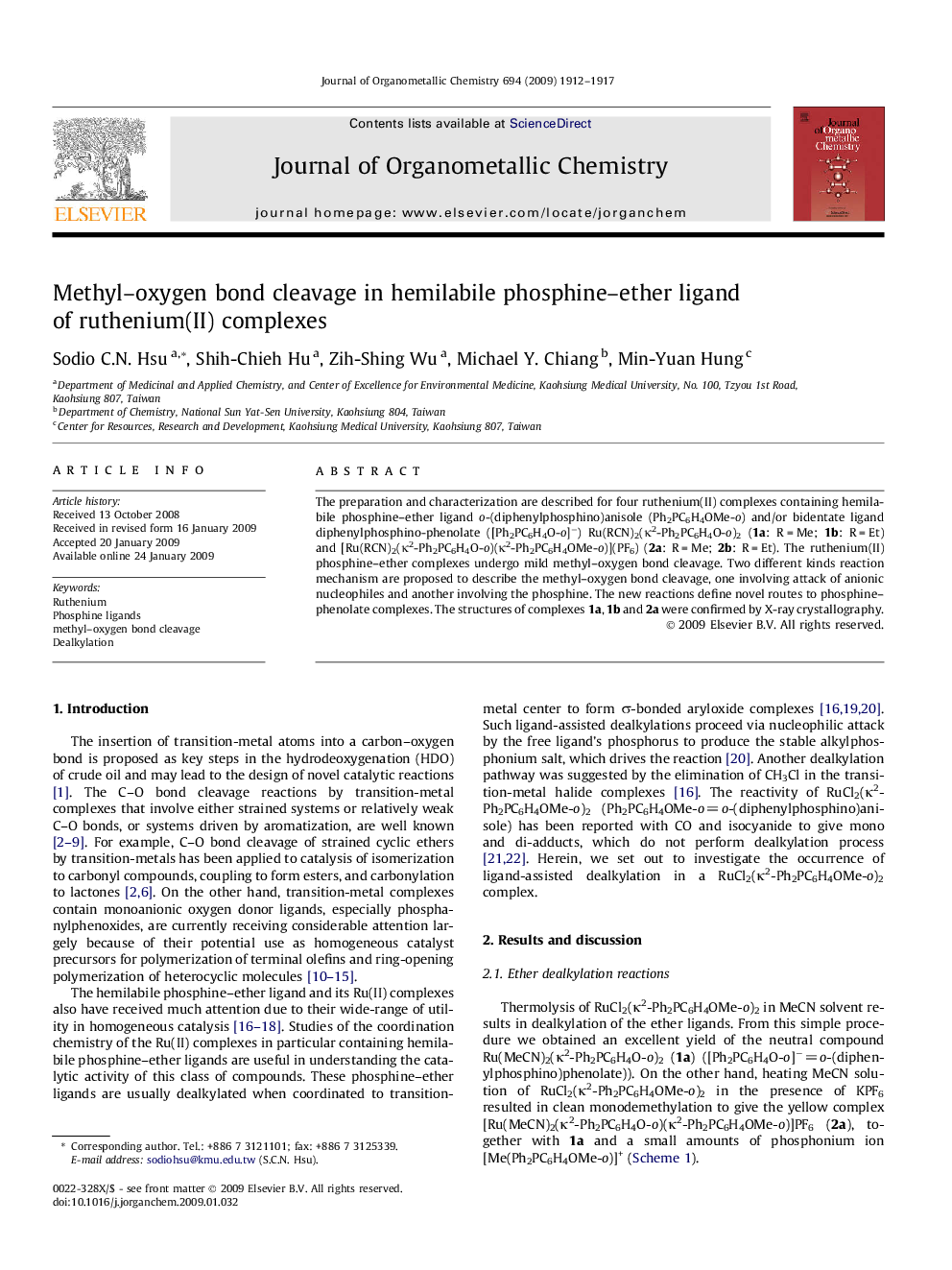| Article ID | Journal | Published Year | Pages | File Type |
|---|---|---|---|---|
| 1326781 | Journal of Organometallic Chemistry | 2009 | 6 Pages |
The preparation and characterization are described for four ruthenium(II) complexes containing hemilabile phosphine–ether ligand o-(diphenylphosphino)anisole (Ph2PC6H4OMe-o) and/or bidentate ligand diphenylphosphino-phenolate ([Ph2PC6H4O-o]−) Ru(RCN)2(κ2-Ph2PC6H4O-o)2 (1a: R = Me; 1b: R = Et) and [Ru(RCN)2(κ2-Ph2PC6H4O-o)(κ2-Ph2PC6H4OMe-o)](PF6) (2a: R = Me; 2b: R = Et). The ruthenium(II) phosphine–ether complexes undergo mild methyl–oxygen bond cleavage. Two different kinds reaction mechanism are proposed to describe the methyl–oxygen bond cleavage, one involving attack of anionic nucleophiles and another involving the phosphine. The new reactions define novel routes to phosphine–phenolate complexes. The structures of complexes 1a, 1b and 2a were confirmed by X-ray crystallography.
Graphical abstractTwo different kinds reaction mechanism are proposed to describe the methyl–oxygen bond cleavage, one involving attack of anionic nucleophiles and another involving the phosphine. It is first time to observe the elimination of CH3Cl and the formation of the phosphonium ion in a reaction, which may provide us a good example to study the condition of dealkylation of transition-metal complexes.Figure optionsDownload full-size imageDownload as PowerPoint slide
